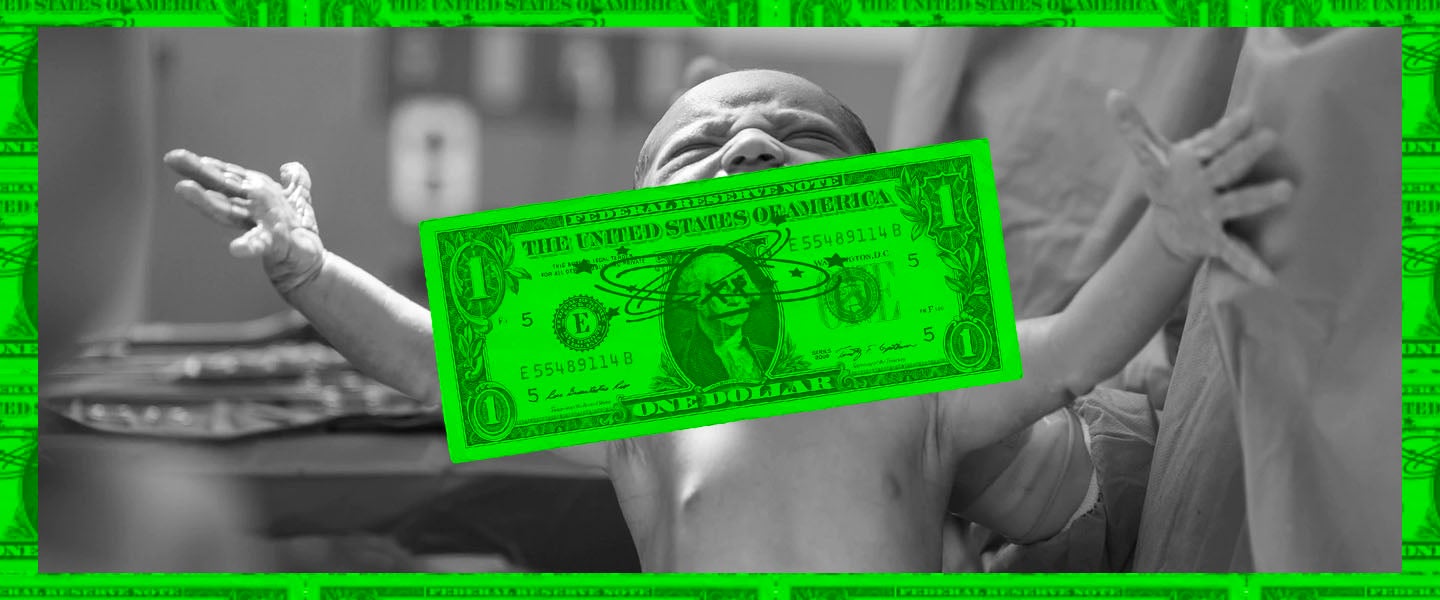If you’re single and know how much your salary is, you have a good idea of how much you’re worth. And if you’re thinking of having a kid, or have one on the way, you’re probably wondering — or stressing about — how much they’ll cost. Wanna know how much? Let’s break it down before the inevitable, well, breakdown.
Do I… do I wanna know the total amount?
Probably not! At least, not without context. So let’s start at the beginning: Birth. The average cost of giving birth varies widely by state. If we’re talking natural birth, it’s around $5,000 in Alabama, but more than $10,000 in Alaska. The average price of C-section births range from $7,400 in Washington, D.C. to $14,500 in Alaska (C-sections, despite the offhand way they’re sometimes discussed, are actually major abdominal surgery). Of course, so much of your out-of-pocket costs depends on your insurance policy. You might owe thousands; you might owe nothing.
If fertility treatments are in the picture, things get expensive quickly: One round of in-vitro fertilization can cost $15,000, and sometimes it takes multiple rounds to conceive a child. Adoption cost varies widely, too, from $15,000 to $40,000 — and that’s for babies born in the U.S. International adoptions can cost as much as $50,000, according to the Department of Health and Human Services.
What about after that? Just gets more expensive, right?
Let’s talk about childcare, which can be so expensive that it can feel like one parent is basically working just to pay for childcare. It can actually cost more than tuition at a state college, or more than your rent. In California, annual infant care costs $11,817, which is $985 a month. According to the Department of Agriculture, people spend, nationally, $12,980 per child, which includes housing, food, childcare, transportation, clothes and everything else.
What does all that other stuff include?
Well, there’s no getting around diapers: The average baby pees and poops through six to 10 diapers a day, which is $70 to $80 per month, or $900 per year. If you’re going the formula route, that can be up to $150 a month, or $1,800 a year. And all that furniture (the crib, the changing table, rocker, etc.)? The Bump estimates that’s about $2,000 altogether.
A car seat costs $40 to $280; playpens are $60 to $180; a baby carrier can cost $40 to $180. Strollers? Anywhere from $100 to $1,500. And don’t forget all the clothes that they grow out of almost immediately (up to $1,000 for the first year). You wonder why couples throw baby showers? This is why. They may suck, but they exist for a very good reason!
Holy cow. What comes next?
Well, depends on how you want to entertain your kid. Most American families (63 percent) spend between $100 to $499 every month on youth sports, according to TD Ameritrade (music lesson costs are in the same ballpark). Then there’s family vacations (averaging $4,580 for a family of four). Last but never least, if you go the private school route, that could be $7,770 every year of elementary school, and $13,030 a year for high schools. Boarding schools are obviously a lot more expensive.
Ugh. Any idea what college will cost in 18 years?
Yes, and I’m telling you, you don’t wanna know. But here’s your answer, according to Vanguard: As much as a half-million dollars. That’s $120,000 a year for tuition and room and board (though it’s unclear whether copious amounts of cheap beer are factored in) for a private school. Public universities could average out to $54,000 a year, or $216,000 total (if it only takes them four years to graduate, that is).
So what’s all that add up to?
Per the Department of Agriculture, a kid averages $233,610 from birth through age 17, or $14,000 annually. It changes a lot based on geography, however: Urban parents spend more ($253,770 in the Northeast, $235,140 in the West, $221,730 in the South and $217,020 in the Midwest) than rural ones, which are closer to $193,020 on average. Also, as you can imagine, higher-income families spend far more per child ($372,210!) than lower-income families ($174,690). Worth noting is that economies of scale come into play: Families with three or more kids spend 24 percent less per child, while parents of only children spend 27 percent more on them.
Yes, kids are crazy expensive, and they also cost time and precious sleeping hours. But as any parent will tell you — well, except maybe on the very worst days — they’re honestly worth it.
Probably. I’ll let you know.

